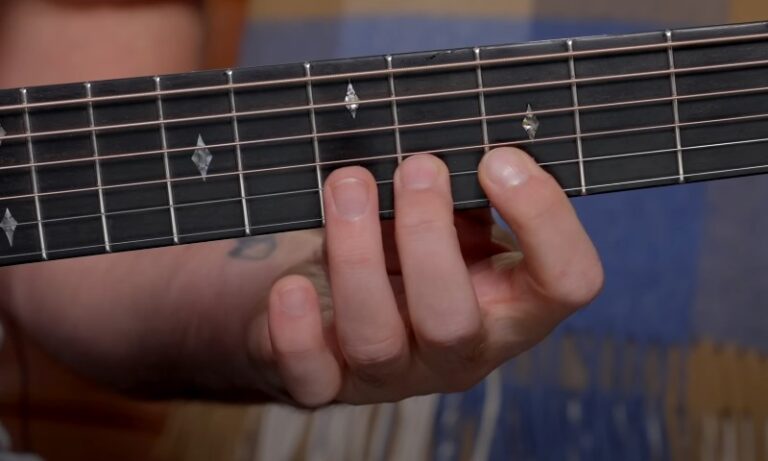Sound isn’t just something you hear—it’s something you feel, deep down. When those waves hit your ears, they turn into signals that zip straight to your brain. They ping places like the amygdala (your emotional hotspot) and the hippocampus (where memories hang out). That’s why a song from your teenage years can hit you like a time machine, or a loud bang can make you jump out of your skin.
A study from 2013 in The Science Daily kicked things off with proof: people who listened to upbeat music for two weeks felt happier and more energized than those who didn’t. It’s not just a fluke—sound can tweak your mood fast because it’s wired into us. Think about it: humans have been banging drums and singing for thousands of years, way before we had words to argue with. Sound’s primal, and it’s got a direct line to how you feel.
Table of Contents
ToggleThe Science of Sound and Emotion: How It Works

Sound isn’t just something you hear—it’s something you feel. When sound waves enter your ears, they’re converted into electrical signals that travel to your brain. There, they interact with regions like the amygdala (your emotional control center), the hippocampus (memory hub), and the prefrontal cortex (decision-making HQ). This interplay explains why certain sounds can make you feel energized, nostalgic, or even anxious.
Participants who listened to cheerful tunes reported feeling more positive compared to those who didn’t.
Meanwhile, a 2015 study in Frontiers in Human Neuroscience showed that sad music activates the brain’s reward system in some people—explaining why you might enjoy a good cry to a heartbreak ballad.
The Emotional Power of Music

Let’s start with the big one: music. It’s no surprise that music is one of the most powerful mood-altering tools we have. Anthropologists believe humans have been making music for at least 40,000 years—long before we had language as we know it. Why? Because it connects us emotionally.
Take a look at this table summarizing how different types of music affect mood, based on research and psychological studies:
| Music Type | Emotional Effect | Example Scenario | Research Insight |
| Upbeat Pop | Boosts energy, happiness | Prepping for a party | 2013 Journal of Positive Psychology: Improved mood after 2 weeks of upbeat tunes |
| Classical | Calms, reduces stress | Studying or unwinding | 1994 “Mozart Effect” study: Enhanced spatial reasoning after listening |
| Heavy Metal | Releases anger, energizes | Post-breakup catharsis | 2015 Frontiers in Human Neuroscience: Can regulate sadness or anger |
| Sad Ballads | Evokes nostalgia, bittersweet feelings | Reflecting on lost love | 2014 PLOS ONE: Sad music triggers dopamine release in some listeners |
| Nature Sounds (e.g., rain) | Relaxes, improves focus | Meditating or working | 2017 Scientific Reports: Nature sounds lower stress hormones |
Pretty cool, right? Let’s unpack a few of these.
- Upbeat Pop: Ever wonder why Pharrell Williams’ “Happy” became a global hit? Its fast tempo (around 140 beats per minute) and major key trigger the release of dopamine, the “feel-good” chemical. A 2019 study from the University of Missouri confirmed that songs with high energy and positive lyrics can shift your mood almost instantly.
- Classical Music: The famous “Mozart Effect” suggests that listening to Mozart’s compositions can temporarily boost cognitive skills. While the jury’s still out on whether it makes you smarter long-term, a 2016 meta-analysis in Psychomusicology found that classical music consistently lowers cortisol levels (the stress hormone).
- Sad Music: This one’s a bit of a paradox. Why do we enjoy feeling sad? A 2014 study in PLOS ONE found that sad music can stimulate the release of prolactin, a hormone linked to emotional catharsis. So when Adele’s “Someone Like You” makes you tear up, your brain might actually be thanking you for the release.
Hidden Influence of Everyday Sounds

Music gets a lot of attention, but what about the sounds you don’t consciously choose? The hum of a refrigerator, the screech of a car braking, or the rustle of leaves—all these can subtly tweak your mood.
Nature Sounds
A 2017 study in Scientific Reports found that listening to natural sounds like birdsong or flowing water reduces stress and improves focus. Participants exposed to these sounds showed lower heart rates and reported feeling more relaxed compared to those hearing urban noise. That’s why “rain sound” playlists are so popular on YouTube—they mimic this calming effect.
White Noise
@brutamericaWhat exactly is white noise and why is it so important?♬ original sound – Brut.
Ever tried sleeping with a fan on? White noise—steady, consistent sound—can mask disruptive noises and calm your brain.
A 2020 study in NCBI found that white noise improves sleep quality, especially in noisy environments, which in turn boosts mood the next day.
Annoying Sounds
Nails on a chalkboard or a kid wailing? Your stress spikes fast. It’s your brain going, “Nope, not cool.” Places like a top-notch music studio in London know how to dodge those bad vibes, crafting sounds that lift you up instead of dragging you down.
Real-World Examples

Let’s make this tangible. Here are some ways sound changes mood in everyday life:
- Movie Soundtracks: Imagine Jaws without that iconic “dun-dun, dun-dun” score. Composer John Williams used low-frequency tones to build suspense, tapping into our primal fear of the unknown.
- Retail Stores: Ever notice how fast-paced music plays in clothing stores? A 2019 study in the Journal of Retailing found that upbeat tempos encourage quick browsing and impulse buys, while slower music in luxury stores promotes lingering and contemplation.
- Workouts: Gym playlists are no accident. A 2010 study in The Research Gate showed that music with a tempo of 120-140 beats per minute (think “Sweet Caroline” or EDM tracks) boosts endurance and motivation during exercise.
Audio Oddities That Affect Mood
Sound’s emotional power isn’t always predictable. Here are some quirky examples:
- ASMR: Autonomous Sensory Meridian Response is that tingly feeling some people get from soft sounds like whispering or tapping.ASMR videos reduce heart rates and increase feelings of calm in susceptible listeners. Not everyone gets it, but for those who do, it’s like an audio hug.
- Infrasound: These are sound waves below 20 Hz—too low for humans to hear consciously. Yet, a 2003 experiment by UK researchers found that infrasound at concerts caused feelings of unease or awe, even when participants didn’t know it was there. It’s why you might feel a “vibe” in certain places.
- The Shepard Tone: This auditory illusion makes it sound like a tone is endlessly rising (or falling) in pitch. Used in films like Dunkirk, it creates tension without you even realizing why. Your brain tries to make sense of it, leaving you subtly unsettled.
Can You Harness Sound to Control Your Mood?
Absolutely! Here’s a practical table to help you use sound strategically:
| Mood You Want | Sound Solution | Why It Works | Try This |
| Energized | Fast-paced music (120-140 BPM) | Boosts dopamine, heart rate | “Can’t Stop the Feeling!” by Justin Timberlake |
| Relaxed | Nature sounds or slow classical | Lowers cortisol, slows breathing | “Clair de Lune” by Debussy or a rain playlist |
| Focused | White noise or lo-fi beats | Masks distractions, steadies brain waves | “Chillhop Essentials” on Spotify |
| Cathartic | Sad or intense music | Releases prolactin, processes emotions | “Hurt” by Johnny Cash |
| Creative | Ambient or instrumental music | Stimulates imagination without lyrics | Brian Eno’s “Music for Airports” |
Wrapping It Up: Sound as Your Emotional Remote Control
So, can sound really change your mood? The evidence is loud and clear: Yes, it can—and does—every day. Whether it’s a pump-up anthem before a big meeting, the soothing trickle of a stream to unwind, or even the eerie hum of infrasound at a haunted house, audio is a powerful emotional lever. Science shows it tweaks your brain chemistry, taps into memories, and even influences your body’s stress response. Speaking of science, find out how Stayin Alive became the anthem of CPR training.
Next time you’re feeling off, don’t just reach for coffee or chocolate—plug in your headphones. With the right sound, you might just find yourself dancing, crying, or chilling out exactly when you need to. What’s your go-to mood-shifting sound? Drop it in the comments—I’d love to hear!
Related Posts:
- How Can You Strengthen Your Picking Skills Using…
- How to Develop Your Own Unique Guitar Sound
- Wait, Haven’t I Heard This Before? Songs That Sound the Same
- 10 Upgrades That Make a Cheap Electric Guitar Sound…
- What is the Standard Tuning for DADGAD? - Elevate…
- How to Tune Your Guitar Strings - A Step-by-Step Guide












